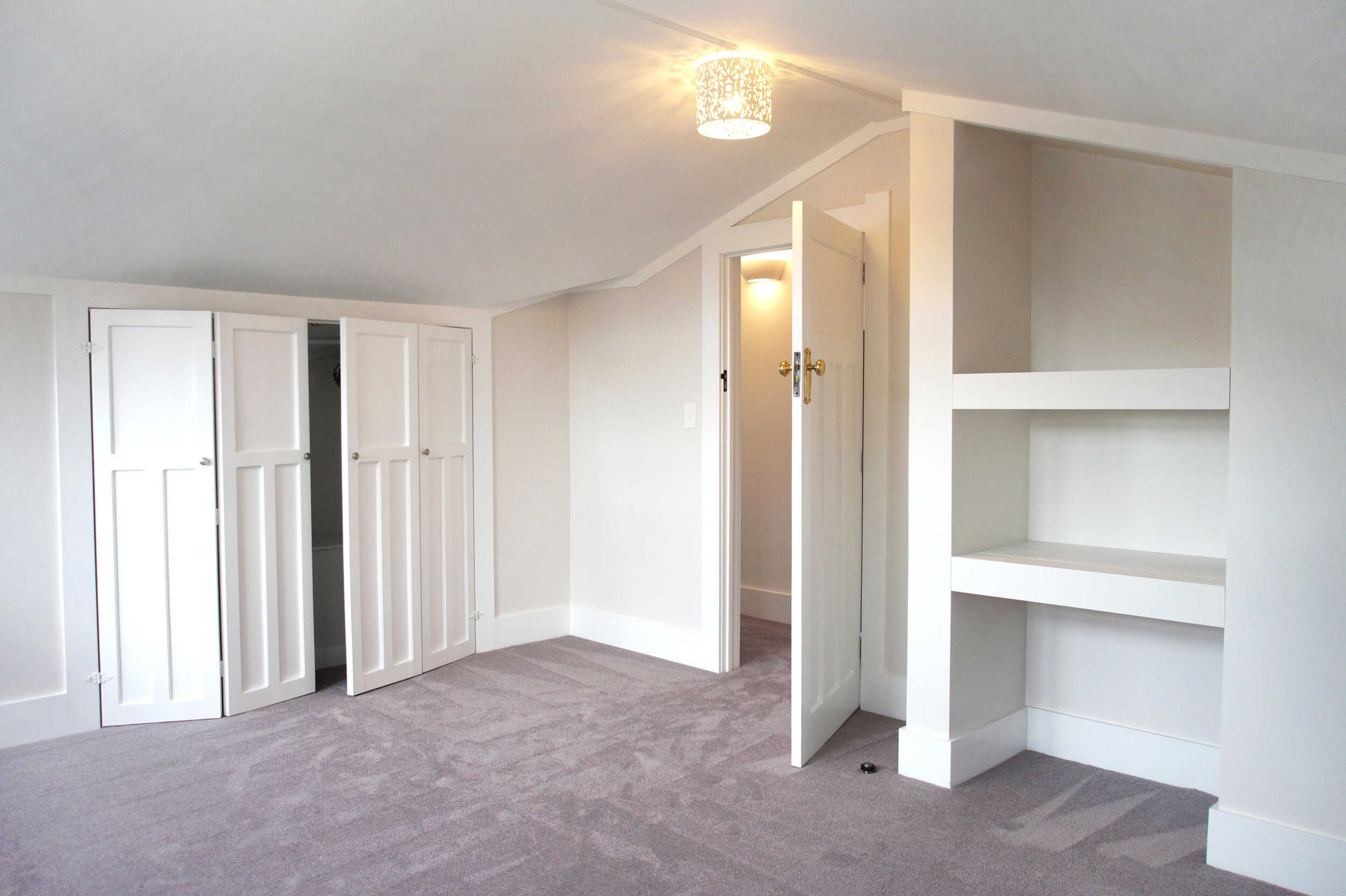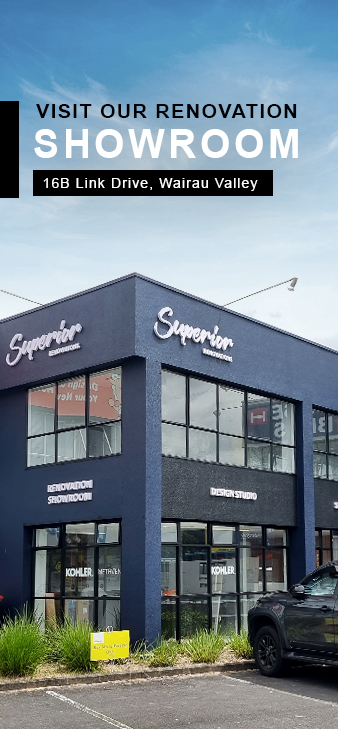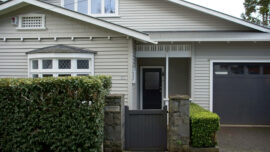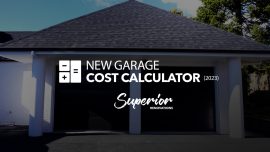
Guide to Loft and Attic Conversions in New Zealand
Loft and attic conversions have become increasingly popular in New Zealand as homeowners seek to maximize their living space without the expense and disruption of moving. Converting an unused attic or loft space into a functional room can add significant value to a property and provide much-needed additional living space. This guide explores the process, benefits, costs, and considerations for undertaking a loft or attic conversion.
Can You Convert Your Attic to a Usable Space?
Converting your attic into a usable space is a great way to add value and functionality to your home. However, there are several criteria and considerations to evaluate before starting the project.
Criteria for Attic Conversion
- Height and Space
- Headroom: The attic should have sufficient headroom. A minimum height of 2.2 meters (around 7 feet 3 inches) is generally recommended at the highest point.
- Floor Space: Adequate floor space is necessary to make the attic a practical living area.
- Structural Integrity
- Load-Bearing Capacity: The existing floor joists must be strong enough to support the new room’s weight, including furniture, people, and any additional fixtures.
- Roof Structure: The roof’s structure should allow for the conversion without requiring extensive alterations.
- Access and Egress
- Staircase: There should be enough space to install a staircase. It needs to be convenient and comply with building codes.
- Emergency Exit: Adequate egress windows or other exits must be included for safety.
- Building Regulations and Planning Permission
- Local Codes: Compliance with local building codes and regulations is mandatory. This includes aspects like fire safety, insulation, and structural requirements.
- Planning Permission: Depending on your location and the extent of the conversion, you may need planning permission or building consent.
- Lighting and Ventilation
- Natural Light: Adequate natural light can be achieved through skylights or dormer windows.
- Ventilation: Proper ventilation is essential to prevent moisture buildup and ensure a healthy living environment.
- Utilities and Services
- Electrical Wiring: The attic should have sufficient electrical wiring to support lighting, outlets, and any other electrical needs.
- Heating and Cooling: Ensure that the space can be adequately heated and cooled.
- Plumbing: If you plan to include a bathroom or kitchen, plumbing must be considered.
Considerations for Attic Conversion
- Purpose of the Space: Define how you intend to use the attic—bedroom, office, playroom, etc. This will influence the design and features needed.
- Insulation and Energy Efficiency: Proper insulation is critical for comfort and energy efficiency. Consider using high-quality materials to maintain a stable temperature.
- Cost and Budget: Outline a budget that covers all aspects of the conversion, from design and materials to labor and permits. Be prepared for potential cost overruns.
- Professional Assistance: Hiring an architect or a professional designer can help ensure that your plans are feasible and comply with regulations.
- Timeline: Establish a realistic timeline for the project, considering potential delays and the availability of materials and contractors.
By thoroughly evaluating these criteria and considerations, you can determine whether converting your attic into a usable space is a viable and worthwhile project for your home.
Benefits of Loft and Attic Conversions
Maximize Space
Attic conversions are an efficient way to utilize existing space. By converting the attic, you can add a new bedroom, home office, or playroom without altering the footprint of your home. It’s essential to plan the layout carefully to ensure the space is used effectively. Consider built-in storage solutions to make the most of awkward angles and low ceiling heights.
Increase Property Value
A well-executed loft conversion can significantly increase the value of your property. It adds square footage and can make your home more appealing to potential buyers. To maximize this benefit, ensure that the conversion is high-quality and fits seamlessly with the rest of the house. Choose neutral finishes that appeal to a broad range of buyers.
Cost-Effective
Compared to building an extension, loft conversions are generally more cost-effective. They involve less structural work and can often be completed more quickly. To keep costs down, plan meticulously and avoid changes once the work has started. Getting multiple quotes and choosing a reputable contractor can also help manage your budget.
Energy Efficiency
Converting an attic space can improve your home’s insulation. Proper insulation and ventilation during the conversion process can lead to energy savings and a more comfortable living environment. Use high-quality insulation materials and ensure all gaps are sealed to prevent heat loss. Consider installing energy-efficient windows to enhance thermal performance.
Planning Your Conversion
Assessing Feasibility
Before starting a loft conversion, it’s essential to determine whether your attic space is suitable for conversion. Key factors to consider include ceiling height, structural integrity, and access. Engage a structural engineer to assess the existing structure and ensure it can support the additional weight. This step can prevent costly issues down the line.
Design and Planning for Attic Conversions
Once the feasibility is confirmed, the next step is to design the space. Considerations include the purpose of the room, natural light, and building regulations. It is essential to work with an architect or designer to create detailed plans that meet your needs and comply with local regulations. Incorporate features like skylights to enhance natural light and ventilation.
Building Consent
Securing building consent is crucial for attic conversions. This consent ensures that the conversion meets safety and structural standards, as well as local zoning laws. Without proper approval, you might face legal issues or difficulties when selling your property. Building consent also ensures that the work is completed to a high standard, providing peace of mind that your new space is both safe and compliant.
Design Elements to Consider for Attic Conversions
When planning an attic conversion, it’s important to carefully consider various design elements to ensure a functional and aesthetically pleasing result. Our team of talented designers, project managers, and qualified builders, backed by world-class systems, ensures that your conversion or renovation is completed efficiently and to the highest standard. Here are key design elements to contemplate:
Whole of Life / Future-Proofing the Design
- Long-Term Usability: Consider how the space will be used over time. Design flexibility into the layout so the room can serve different purposes as your needs change.
- Accessibility: Ensure that access to the attic is convenient and safe, especially if it might be used by elderly family members or those with mobility issues in the future.
Maximizing Views
- Window Placement: Strategically position windows and skylights to capture the best views and allow natural light to flood the space.
- Dormer Windows: Adding dormer windows can not only enhance views but also provide additional headroom and aesthetic appeal.
Connection to Existing Living Spaces
- Seamless Integration: Design the attic conversion to blend seamlessly with the existing living spaces. Consider the flow between floors and how the attic space will connect with the rest of the home.
- Staircase Design: Choose a staircase that complements your home’s style and doesn’t take up excessive space. Spiral staircases or compact designs can be effective in saving space.
Structural Considerations for Additional Weight
- Load-Bearing Capacity: Ensure that the floor joists and overall structure can support the additional weight of the converted attic. This may involve reinforcing the existing structure.
- Professional Assessment: Engage a structural engineer to assess and recommend any necessary modifications to support the new space safely.
Conditioning the Space
- Insulation: Proper insulation is critical for maintaining a comfortable temperature and energy efficiency. Use high-quality insulation materials to prevent heat loss and manage temperature fluctuations.
- Ventilation: Incorporate adequate ventilation to prevent moisture buildup and ensure good air quality. This is especially important in attic spaces where heat can accumulate.
- Heating and Cooling: Plan for appropriate heating and cooling solutions. Consider options like HVAC systems, radiant floor heating, or ductless mini-split systems to maintain a comfortable environment year-round.
By carefully considering these design elements, you can create a functional, comfortable, and aesthetically pleasing attic conversion that enhances your living space and adds value to your home.
Common Attic Conversions in New Zealand
Converting an attic can transform an underutilized space into a functional and valuable part of your home. In New Zealand, attics are commonly converted into various types of rooms, each offering unique benefits and uses. Here’s an overview of the most common attic conversions and a note on the typical roof space available in New Zealand villas and bungalows.
Common Attic Conversions
| Attic Conversion Idea | Description | Key Considerations | Estimated Cost | Council Consent | Conversion Time |
| Bedroom | Increases home value, provides additional room. | Headroom, natural light, insulation, ventilation | $20,000+ | Most likely required | 6-12 weeks |
| Storage | Offers storage solutions, helps declutter other areas. | Sturdy flooring and shelving, easy access | Under $20,000 | Probably not required | 1-2 weeks |
| Living Area | Provides extra space for relaxation, entertainment, or hobbies. | Comfortable seating, good lighting, ventilation | $50,000+ | Most likely required | 2-3 months |
| Home Office | Boosts productivity, creates a professional environment. | Natural and artificial lighting, ergonomic furniture, internet connectivity | $40,000+ | Most likely required | 4-8 weeks |
| Reading Room | Provides a peaceful retreat for enjoying books. | Shelving, comfortable seating, good lighting, insulation | $30,000+ | Most likely required | 4-6 weeks |
| Playroom | Offers a safe and dedicated area for children to play. | Child-friendly features, supervision, durable flooring, storage | $25,000+ | Maybe required (check with council) | 2-4 weeks |
Additional Notes:
- These are estimated costs and can vary significantly depending on your location, project size, materials, and finishes. It’s recommended to get quotes from several contractors for a more accurate estimate.
- Council consent requirements can vary depending on your location. Check with your local council building department for specific regulations.
- Conversion times are approximate and can be influenced by project complexity and unforeseen circumstances.
- Consider the value increase to your property when evaluating if a conversion is “worth it.”
- Discuss with your contractor whether you’ll need to move out during the conversion.
One of the most popular attic conversions is transforming the space into a bedroom. This not only increases your home’s value but also provides an additional room for a growing family or guests. Ensuring there is sufficient headroom and natural light is crucial for comfort. Additionally, proper insulation and ventilation are essential to create a cozy sleeping environment.
Another common use for attics is as storage space. This conversion can offer much-needed storage solutions, helping to declutter other areas of your home. When designing a storage attic, it’s important to install sturdy flooring and shelving. Easy access through a well-designed staircase enhances usability, making it easier to store and retrieve items.
Attics are also frequently converted into living areas, providing extra space for relaxation, entertainment, or hobbies. When planning a living area, focus on comfortable seating, good lighting, and proper ventilation. Integrating this new living space with the rest of the house is key to achieving a cohesive design that feels like a natural extension of your home.
For those working from home, converting an attic into a home office can be highly beneficial. A quiet, dedicated workspace can boost productivity and create a professional environment. To make the space functional, ensure there is adequate natural and artificial lighting. Ergonomic furniture and reliable internet connectivity are also crucial elements for an effective home office.
Book lovers may consider converting their attic into a reading room or library. This can provide a peaceful retreat for enjoying books. When designing a reading room, incorporate plenty of shelving, comfortable seating, and good lighting. Proper insulation will help maintain a comfortable temperature, making it an inviting space year-round.
Creating a playroom in the attic offers a safe and dedicated area for children to play, helping to keep other parts of the home tidy. Safety is paramount in a playroom, so include child-friendly features and ensure that the space can be easily supervised. Durable flooring and ample storage for toys are important considerations to keep the room functional and organized.
What are my stairway options?
One of the key decisions when transforming your attic into a usable space is picking the perfect staircase. Here’s a breakdown of your options to help you find the ideal fit for your needs and style:
Considering Space and Budget:
- Straight Stairs: These are the most budget-friendly and easiest to install, making them perfect for simple attic conversions.
- Turning Stairs: If your attic layout requires a change in direction, L-shaped or U-shaped turning stairs might be necessary.
Material Matters:
- Carpet: The most cost-effective option, offering a comfortable walking surface.
- Hardwood or Glass: These elevate the look of your staircase but come at a higher price point.
Adding Flair:
- Floating Stairs: These modern beauties appear to be suspended in mid-air, creating a dramatic visual statement.
- Curved Stairs: A luxurious option that adds a touch of elegance to your attic conversion.
Space Saving Solutions:
- Hometec’s Attic Stairs: These retractable ladders are a great space-saving option, ideal for attics accessed infrequently.
Bonus Tip: Consider incorporating lighting within the stairs or artwork embedded in the treads for an extra “wow” factor.
Roof Space in New Zealand Villas and Bungalows
New Zealand villas and bungalows, particularly those built in the early 20th century, often have distinctive roof spaces that are well-suited for attic conversions. These homes typically feature high-pitched roofs, which provide ample headroom and make them ideal candidates for conversions. The spacious attics in these houses allow for various conversion possibilities, from bedrooms and living areas to offices and playrooms.
When converting attics in older homes, it’s important to consider heritage and aesthetic aspects, ensuring that any changes are sympathetic to the original design. This ensures that the new attic space not only meets modern needs but also retains the charm and character of the original structure. By understanding the common types of attic conversions and the typical roof space available in New Zealand’s villas and bungalows, homeowners can make informed decisions about how to best utilize this valuable area. Whether adding a bedroom, creating a living area, or setting up a home office, a well-planned attic conversion can significantly enhance both the functionality and value of your home.
Costs and Budgeting for Loft Conversions
The cost of a loft conversion can vary widely depending on the size of the space, the complexity of the design, and the finishes chosen. Here’s a breakdown of potential costs, cost considerations, and common cost overruns:
| Conversion Type | Description | Estimated Cost (NZD) | Cost Considerations/Factors | Common Cost Overruns |
| Basic Conversion | Installation of windows, flooring, and insulation | 20,000 – 40,000 | Basic materials and labor | Unforeseen structural issues |
| Mid-Range Conversion | Includes an en-suite bathroom and higher-end finishes | 40,000 – 70,000 | Mid-range fixtures and fittings, moderate design complexity | Upgrades in finishes, additional plumbing or electrical work |
| High-End Conversion | Custom features, extensive structural changes, luxury finishes | 70,000+ | Premium materials, custom designs, significant structural modifications | Design changes during construction, high-end fixtures, delays |
Managing Costs
- Set a Clear Budget: Establish a budget at the outset and prioritize essential features.
- Stick to the Budget: Be prepared to make compromises on non-essential elements.
- Regularly Review the Budget: Monitor expenses throughout the project to avoid overspending.
Common Cost Overruns
- Unforeseen Structural Issues: Unexpected problems with the existing structure that require additional work.
- Upgrades in Finishes: Opting for higher-end materials or fixtures than initially planned.
- Additional Plumbing or Electrical Work: Extra costs for extending or upgrading utilities.
- Design Changes During Construction: Alterations to the original plan can significantly increase costs.
- Delays: Project delays can lead to higher labor costs and extended timelines.
Steps in the Conversion Process
Initial Consultation and Feasibility Study
Engage with a professional to assess the space and discuss your requirements. This step includes structural assessments and preliminary design ideas. Getting expert advice early can help identify potential challenges and ensure your vision is achievable.
Design Phase
Work with an architect or designer to create detailed plans. This phase includes finalizing the layout, choosing materials, and obtaining necessary permits. Detailed planning can help prevent delays and unexpected costs during construction.
Preparation and Demolition
Clear the attic space and make any necessary structural adjustments. This may include reinforcing the floor and adjusting roof structures. Proper preparation is crucial for a smooth construction phase.
Construction
The main construction phase includes building walls, installing windows, and adding insulation. Electrical and plumbing work is also completed during this stage. Ensure all work meets building regulations and safety standards.
Finishing Touches
Once the structural work is complete, finish the space with flooring, painting, and installing fixtures. This is also the time to add any custom features. Pay attention to details to ensure a high-quality finish.
Final Inspection
After completion, the space must be inspected to ensure it meets all building codes and regulations. An inspection can identify any issues that need addressing before the space can be used.
Case Studies
Contemporary Attic Conversion
A family in Auckland converted their attic into a spacious bedroom with an en-suite bathroom. The project included installing large skylights to maximize natural light and create a bright, airy feel. The total cost was approximately $60,000. This project highlights the importance of natural light in making a space feel larger and more inviting.
Home Office Loft Conversion
A Wellington homeowner transformed their loft into a modern home office. The conversion featured custom built-in desks and shelving, as well as energy-efficient lighting. This project cost around $35,000 and was completed in eight weeks. It demonstrates how a well-planned loft conversion can create a functional and stylish workspace.
Loft and attic conversions are an excellent way to add value and functionality to your home. By carefully planning and budgeting, you can transform an underutilized space into a beautiful and practical part of your home. Whether you’re looking to add a new bedroom, office, or living area, a loft conversion offers a cost-effective solution that can enhance your living experience.
How much would it cost to carry out a loft conversion?
Loft conversions can range significantly in price, from creating a simple storage area for under $20,000 to building a full-fledged living space exceeding $150,000 for a 25-30sqm area. The final cost depends heavily on what you plan to use the space for. Storage requires less modification compared to adding a bathroom or bedroom. To get an accurate idea of the cost for your specific attic, consulting local contractors for quotes is recommended.
Do you need council consent to convert your attic?
Generally, any loft conversion that creates a habitable space, such as a bedroom or living room, will require council consent to ensure it meets safety regulations and building codes. Even for simple storage conversions, it's always best to check with your local council beforehand to avoid any complications down the line.
How long does an attic conversion take?
The completion time for a loft conversion can vary greatly. A basic storage solution might take as little as 1-2 weeks, while a full conversion with features like dormer windows could take up to 3 months. The more extensive the renovation, the longer it will take to complete.
Are attic conversions worth it?
A well-done loft conversion can be a worthwhile investment, significantly increasing your property value and providing much-needed extra living space. However, it's important to consider the building requirements. If extensive structural changes are needed to meet building code (e.g., low ceiling height, weak floor), the cost can outweigh the benefits.
Do you have to move out for a loft conversion?
The decision of whether you need to move out during the conversion often hinges on safety. Extensive work overhead might necessitate temporarily moving out for your safety and to allow contractors clear access to the work area. It's always best to discuss this with your chosen contractor based on the specifics of your project and their safety protocols.
Can all attics be converted?
While technically most attics can be converted, some might be impractical due to excessive costs. Factors like very low ceiling height, limited access points, or a roof that can't handle the weight of conversion might make the project financially unrealistic. Consider these limitations when weighing the feasibility of converting your attic.
Please note: Whilst all information is considered to be true and correct at the date of publication, changes in circumstances after the time of publication may impact on the accuracy of the information. The information may change without notice and Superior Renovations is not in any way liable for the accuracy of any information printed and stored or in any way interpreted and used by a user.
Still have questions unanswered? schedule a no-obligation consultation with the team at Superior Renovations
Or call us on 0800 199 888

Have you been putting off getting renovations done?
We have partnered with Q Mastercard ® to provide you an 18 Month Interest-Free Payment Option, you can enjoy your new home now and stress less.
Learn More about Interest-Free Payment Options*
*Lending criteria, fees, terms and conditions apply. Mastercard is a registered trademark and the circles design is a trademark of Mastercard International Incorporated.












0 comments
Write a comment